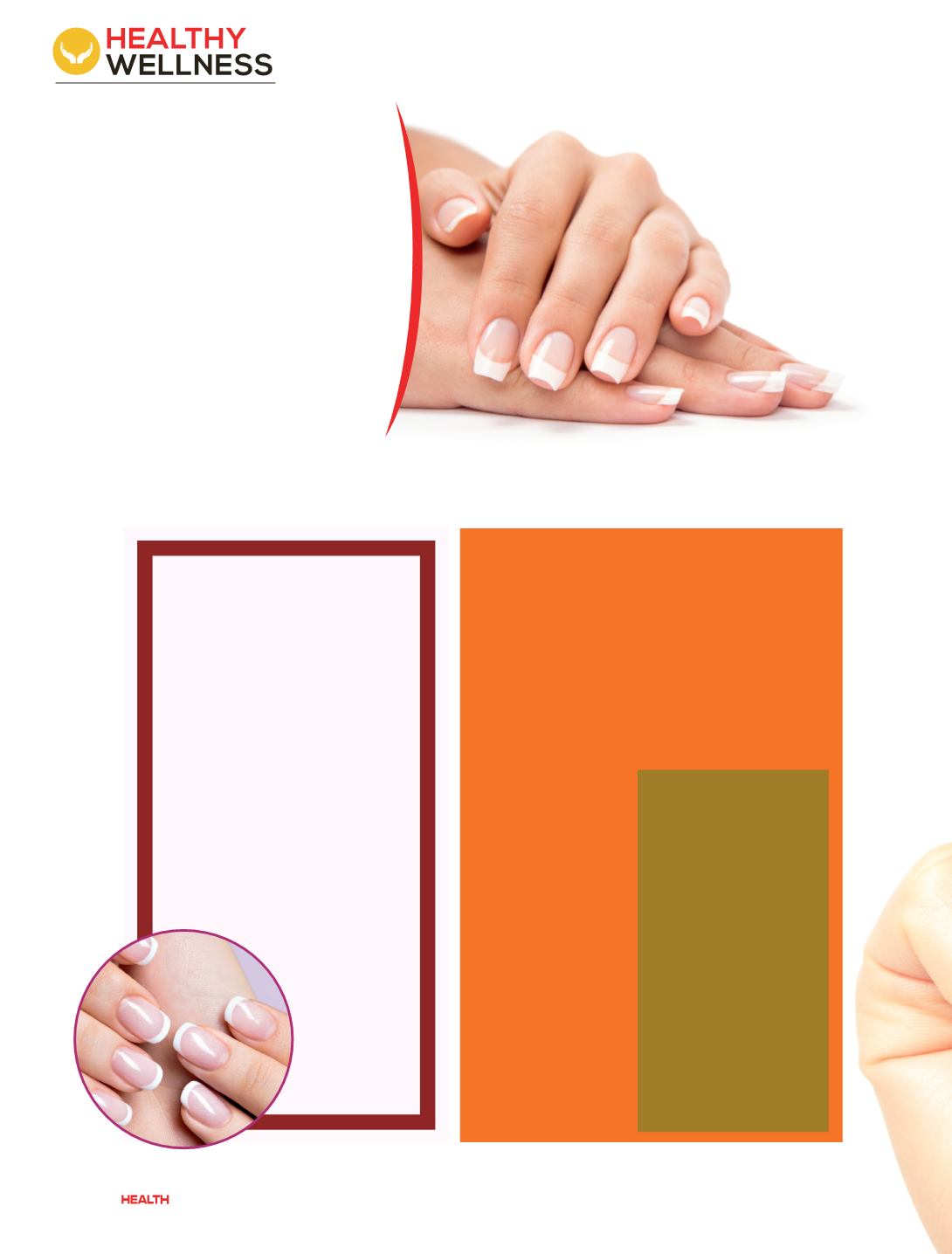

While most of us strive to care for our nails with manicures and the occasional use of hand
cream,
HEALTH
learns that nails can be an indicator of our overall health.
TAKING
CARE OF
YOUR
NAILS
Disease
Square, round, long or short,
changes in our nails, explains
Dr. Nirmala Markandeya,
Specialist Dermatologist, may be a
manifestation of internal disease.
“Due to their slow growth rate,
nails may provide information on
disease conditions that have existed
several months before the actual
time of presentation to your doctor
for a given disease,” she tells, and
in fact, complex internal diseases
may sometimes be diagnosed solely
by color or other changes in the
nail apparatus. Hypoalbuminemia,
malnutrition, kidney disorders,
cardio-respiratory problems,
liver disease, uremia,
autoimmune and
genetic disorders
are the common
disorders
affecting nails,
explains Dr.
Markandeya.
Fungal Infections
Onychomycosis:
This is fungal infection of the nails,
explains Dr. Markandeya. “Fungi may invade the nails
in four different ways, leading to four separate types of
onychomycosis with specific clinical features, prognosis
and response to treatment,” she explains and the type
of nail invasion depends on the fungus responsible and
the host susceptibility. “It is most commonly caused
by Trichophyton rubrum with four basic patterns,
including distal subungual, white superficial, proximal
subungual, and candidial
onychomycosis,” she
tells. “Onychomycosis
presents as discoloration
and thickening of nails
and adjacent skin and
toe nails are more
commonly affected.”
Finger nail infection
is usually associated
with toe nail infection,
often presenting as the
‘one hand, two feet’
syndrome. According
to Dr. Markandeya,
the type of fungus
can be determined by
microscopic analysis and
culture of nail clippings.
Specific Nail Problems
Treatment
The treatment given is oral
antifungals and topical
nail lacquer containing
antifungal medication,
except for superficial
onychomycosis, which
can be treated with any
topical antifungal agent
after scraping of the
affected areas. However
Dr. Markandeya explains
that the treatment
of dermatophyte
onychomycosis usually
requires systemic
antifungal therapy.
20
May/June 2015















